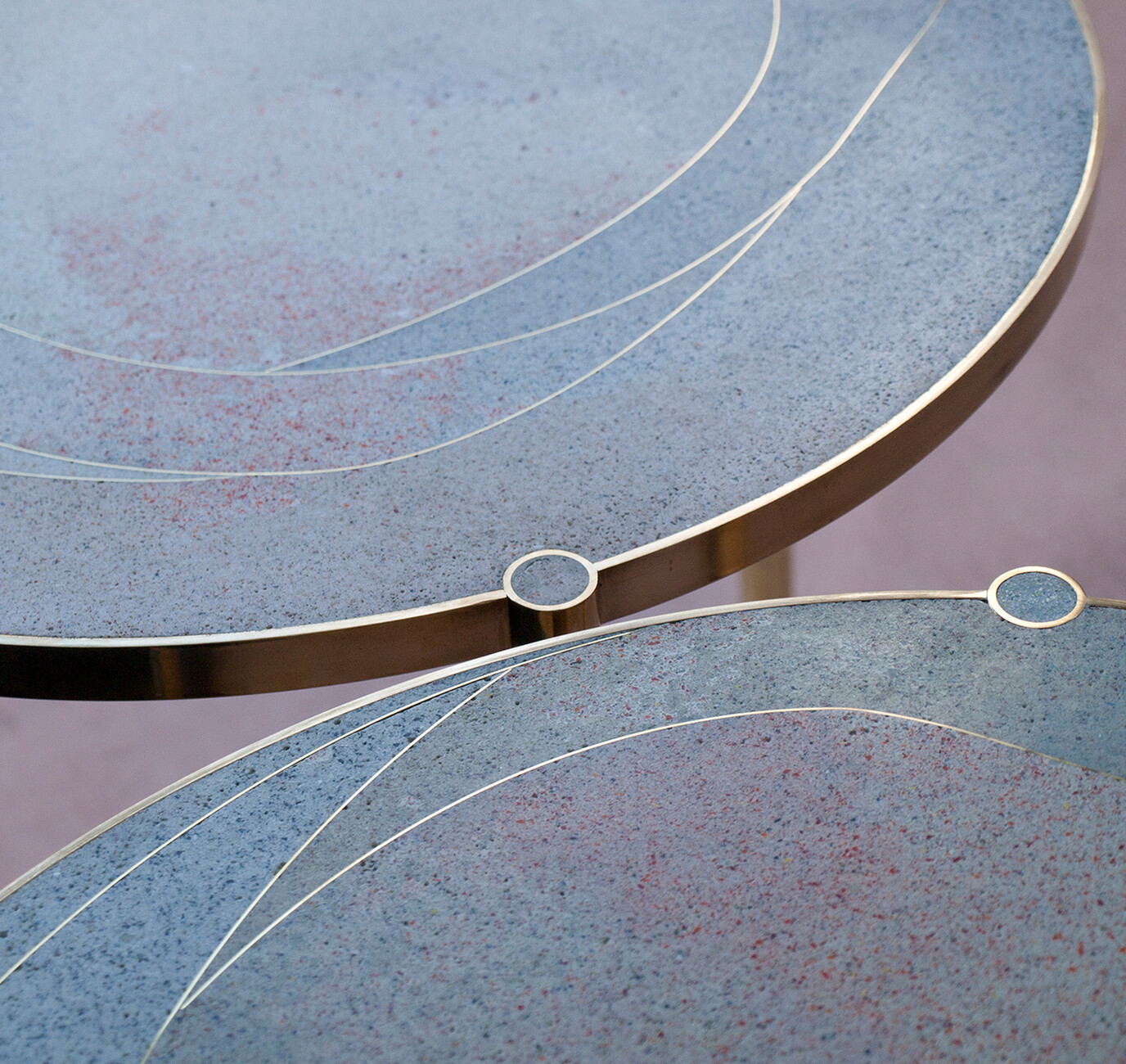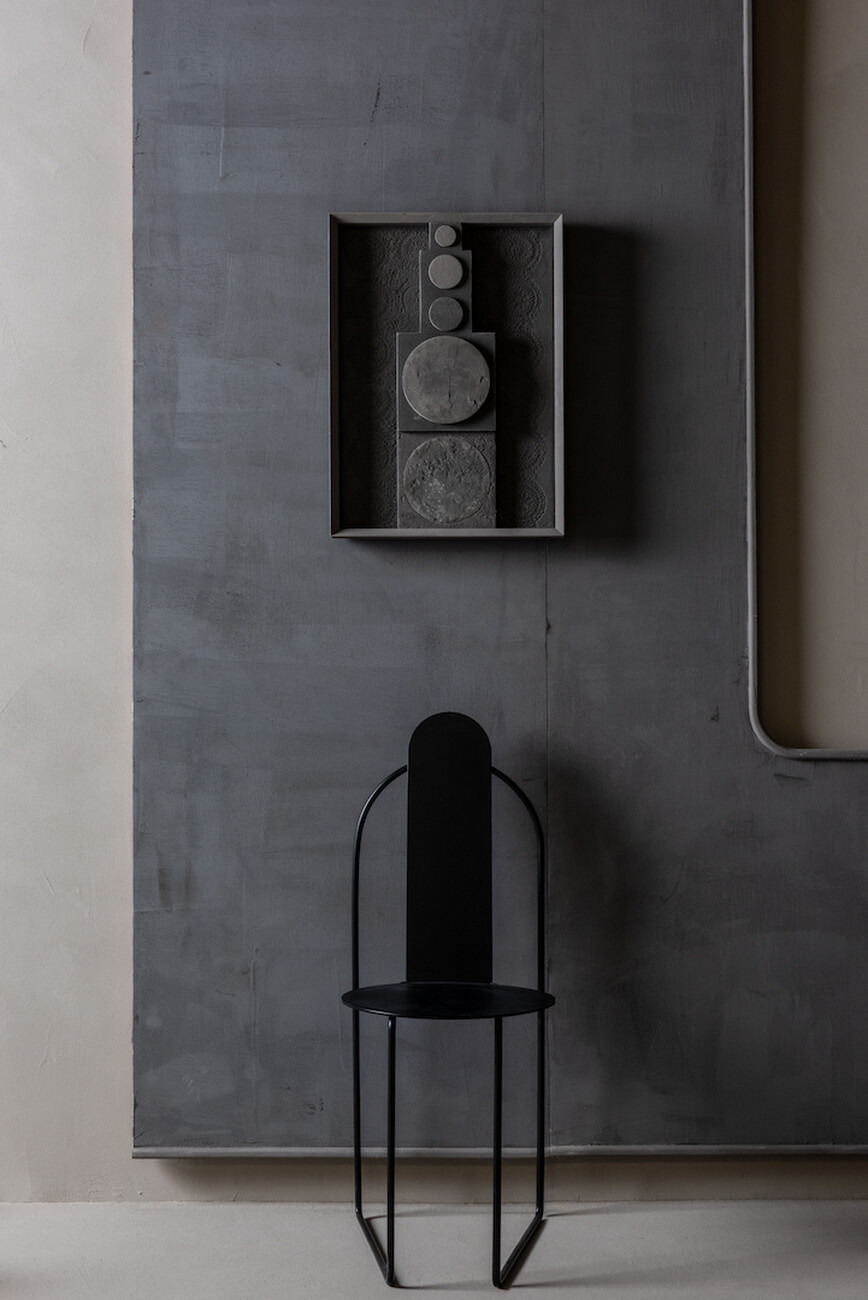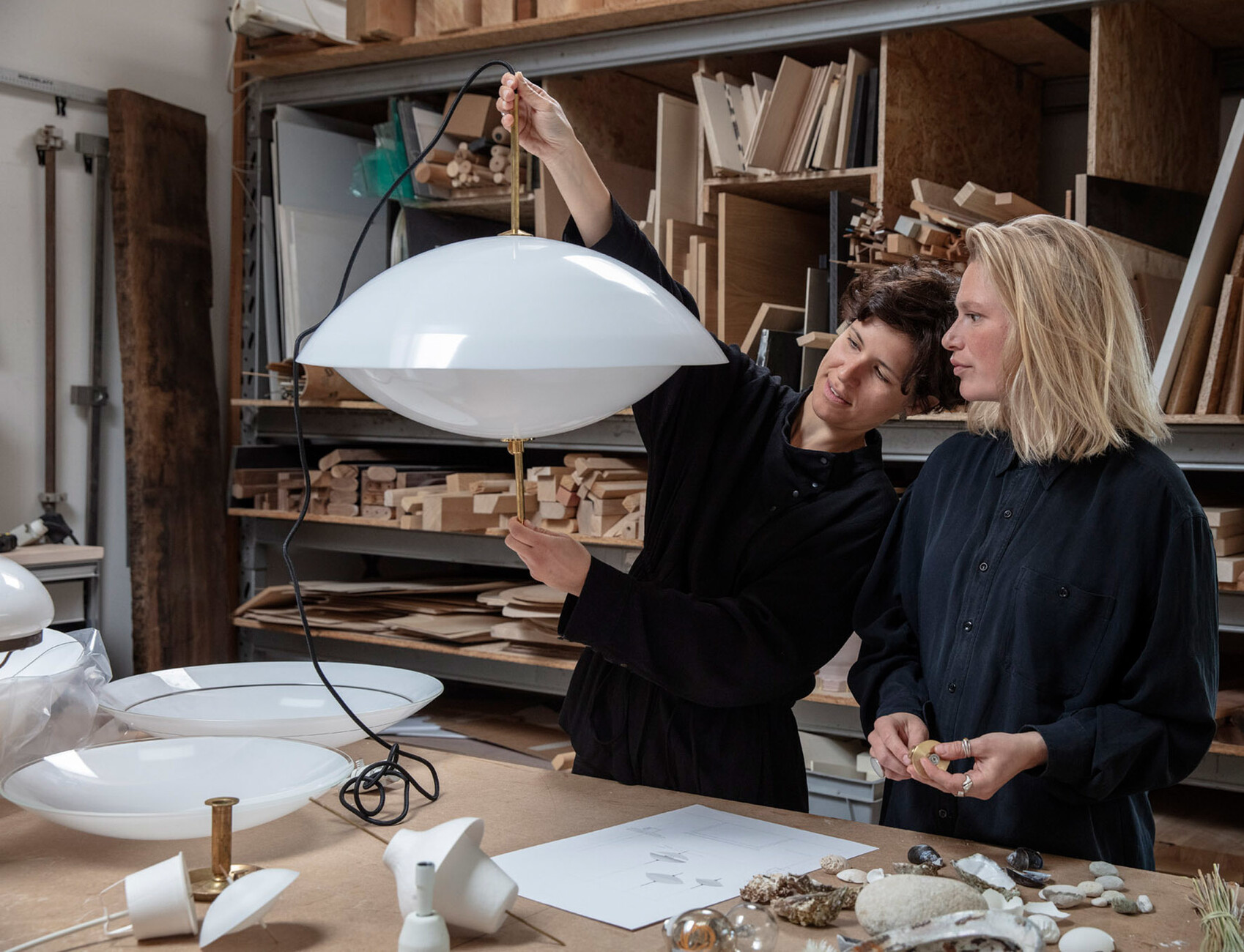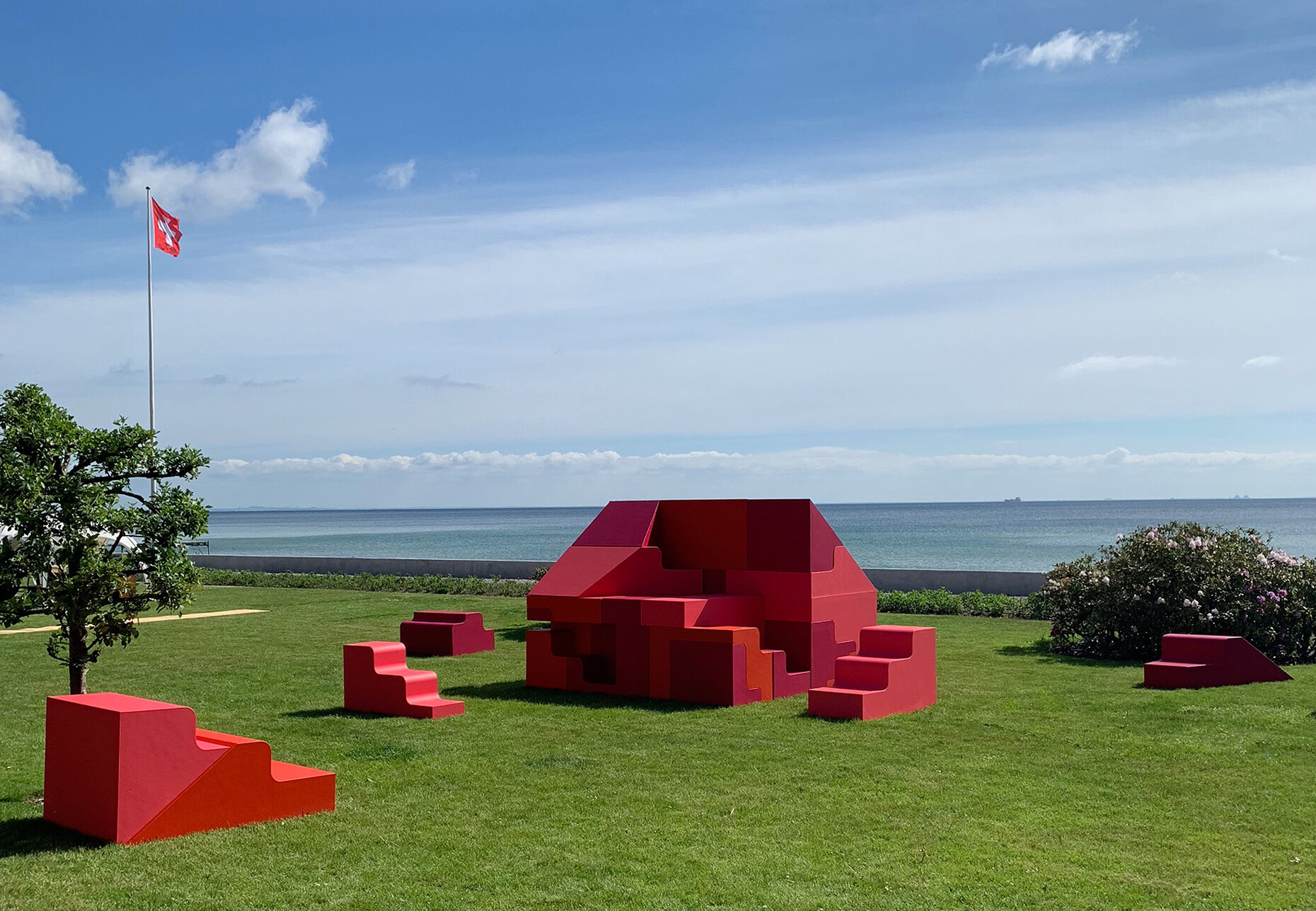3daysofdesign 2019 – Review
New connections
If the 3daysofdesign in Copenhagen came under an overarching banner, then this year’s would have been “sustainability”: There was hardly a producer who did not take up the cause of attaining eco-certifications and keeping their own CO2 footprint as small as possible through local production. Alongside the focus on prudent manufacturing there was also a change in thinking about which materials could be recycled. Popular at the moment: Solutions for the masses of plastic waste we produce that place such an immense strain on the environment. Mater for example relies on worn-out fishing nets, which it has cleaned before making pellets from the plastic. Then, as is usual with thermoplastics, these pellets can melted down used as raw material for the production of furniture. Mater draws on its archives for the design: Namely by selecting Joergen and Nana Ditzel’s curvy combo of a table and chair with a skid frame, designed in the 1950s. At the time, wooden veneer slats were used for the seat and table-top, while today 960 grams of plastic waste go into each so-called “Ocean Chair”. What’s more, every component in its purest form can be reinjected into the recycling process. At the 3daysofdesign Mater also premiered its collection “He & She” including cantilever chairs that feature certified oak wood and straw wickerwork – the company had revisited the material as it grows so quickly.
Snøhetta has been taking the same route: Together with furniture designer Nordic Comfort Products it presented the chair “S-1500” at the beginning of the year. This likewise uses plastic from old fishing nets as a base, while the frame is made of recycled steel. The chair is again a modern re-edition – the underlying design was thought up by Bent Winge in the 1960s. The plastic surfaces of the two chairs have a dark green shimmer and thanks to the random composition of the small pellets each is one of a kind. Not to mention, the CO2 outputs during the production of both designs is extremely low as the raw material extraction is highly energy efficient. Jacob Munch and Henrik Bruun from the Bruunmunch label are also focusing on leftover materials: For example, sections of of italian marble, granite, quartz and ceramics, for example, which are left over from the production of tailor-made kitchen worktops. These would normally have been disposed of in costly ways, or ground down before finding an undeserving end as part of road surfaces. Jacob Munch and Henrik Bruun instead use the high-quality slabs for their “STONEupcycle” occasional tables. Henrik Taudorf Lorensen, CEO of Takt, agrees that “sustainable furniture is a must.” The new company only uses certified wood, has been awarded the ecology label EU-Ecolabel, and ships its furniture disassembled in flat pack boxes in order to reduce its CO2 emissions.
In the realm of textiles, recycled plastics are also gaining importance. Warm Nordic is celebrating Hans Olsen’s 100th anniversary with a new collection that revives three original designs by Olsen from the 1950s: The “Gesture Chair,” the “Fried Egg” and “Mr Olsen Sofa und Lounge Chair”. The leap into the present is made with FSC-certified wood in combination with the fabric “Merit” by Maharam Design Studios for Kvadrat. The latter uses recycled wool and polyester to create a textile rich in color that is also pleasant to the touch. The plastic fibers are made from plastic that – instead of being taken to landfill – has been reprocessed and spun into yarn. Copenhagen-based Qwestion has also made it its mission to foster consumer awareness of sustainable textiles. At the Salone del Mobile the company had already scored with “Bananatex,” the first technical fabric world-wide made using the fibers of organically cultivated banana plants. Practical help for everyday living was further dished out by Really and Mads Norgaard: Under the title “3 Days of Repair and Beyond” they offered a mending service for worn clothing and accepted old clothes to be re-used in their production.
Italian architect Matteo Brioni looked into the natural material clay for use in interior design in the context of the “Dawn Exhibition”: From wall paint to the plastering of surfaces to using clay as floor covering. Thanks to the mineral components of the materials, the crystalline structure of the ecologically sound finish creates a special effect in daylight that is difficult to achieve with artificial paints. Meanwhile, the Polish designer Justyna Poplawaska uses ground recycled glass to create watercolor-like color swirls, which are bound in resin and used in her side tables and screens. What’s special about these is that the small glass pellets are bound with an epoxy resin based on organic matter, a liquid glue that uses much less chemicals than the commonly used resin.
Japannordic
In Copenhagen, everyone agrees: The shift back to natural or at least recyclable materials is a must. With this mindset and the “Soft Minimalism” of pure Scandinavian aesthetics the Nordic creatives have won an ally in spirit: Japan. The movement towards “Japanordic Design” that we have been seeing for some time now is being increasingly perfected – instead of simply combining furnishing items from both countries, the trends are now being melded into new designs. Karimoku, the biggest Japanese furniture manufacturer, has teamed up with Norm Architects and Ashizawa Design to create the new “Karimoku Case Study” brand. The first collection comprises ten items of furniture that may be inspected at Kinfolk Gallery. Hiroshi Kato, vice president of Karimoku Furniture, insists the company operate according to the motto of “High Touch, High Tech” – a focus on combining craftsmanship and sophisticated technology. For the “Case Study” the furniture is presented as part of a complete spatial concept, including colors and accessories curtesy of Norm Architects’ architectural approach. From chair to shelf to sofa: The high quality, detail-oriented results stand up. “Products that need nothing to be added or subtracted in order to make them better,” say Norm Architects. With their “Karimoku Case Study” the team has created a calm and bright atmosphere that makes you feel connected to nature through the furniture. The similarity between the Scandinavian and Japanese design aesthetics gains a new elegance in the Karimoku liaison. The clear geometry of Scandinavian form gains a soft, almost warm touch through the Japanese attention to detail.
A similar spirit can be found reflected in the “Antwerp Dining Table” by Noorstad or the “Japanese Stool Collection” by Kristina Dam Studio. In order for the clear lines of the surfaces not to be too compromised by everyday clutter, small items find a home in shallow boxes, for example those clad in choice leather or textile by August Sandgren.
Looking ahead
Those in search of new products could discover the new pendant “Clam” luminaire by design duo Ahm & Lund for Fritz Hansen – inspired by a seashell the unit hides its light source until the two glass sections of its luminaire body are gently pushed apart. Likewise available from 2020 onwards is the outdoor collection by BIG – Bjarke Ingels Group for Skagerak made up of the “Lounge Table” and “Lounge Chair,” both of which feature metal skids and wood panels and eschew screws. Dinesen in cooperation with the artist Sissel Tolaas offered a scent installation on the basis of scent molecules from different areas of the company’s production. The essence in oil by Dinesen named “DD-2” is the result of almost two years of research. Montana collaborated with Margrethe Odgaard in creating a new color palette made up of 40 lacquer paints and two veneers, all of which have been awarded the official EU eco-label and will be available from autumn 2019 onwards. With the elegant Coupé Sofa by Frits Henningsen, Carl Hansen & Søn reissues a design from 1936. Petersen Tegl has further set up shop on a permanent basis in Copenhagen for the first time with its brand new showroom near the harbor.
The high number of visitors to the showrooms alone is testimony to the fact that the 3daysofdesign has unmistakably gained in international importance. The concept has proven successful through its compact program with a relaxed and always very positive atmosphere and a mix of established producers such as Kvadrat, Fritz Hansen or Please Wait to be Seated and newcomers like Takt, Seven Subjects or Qwstion. Even if we had put eyes on the one or other product at the Salone del Mobile already, the glimpse behind the scenes was well worth it – for example at the wood and metal workshops of KBH Københavns Møbelsnedkeri. This was complimented by a diverse supporting program of expert talks – for example with architect Architekt Bjarke Ingels and Simon Frommenwiler of HFF Architekten in the context of their installation “Puzzle House” or with Benjamin Paulin and Space Copenhagen in their cooperation with Gubi. Art installations such as “Costal Waters” by Laufen and lovingly arranged details ideally rounded off the creative offerings this year once more.


















